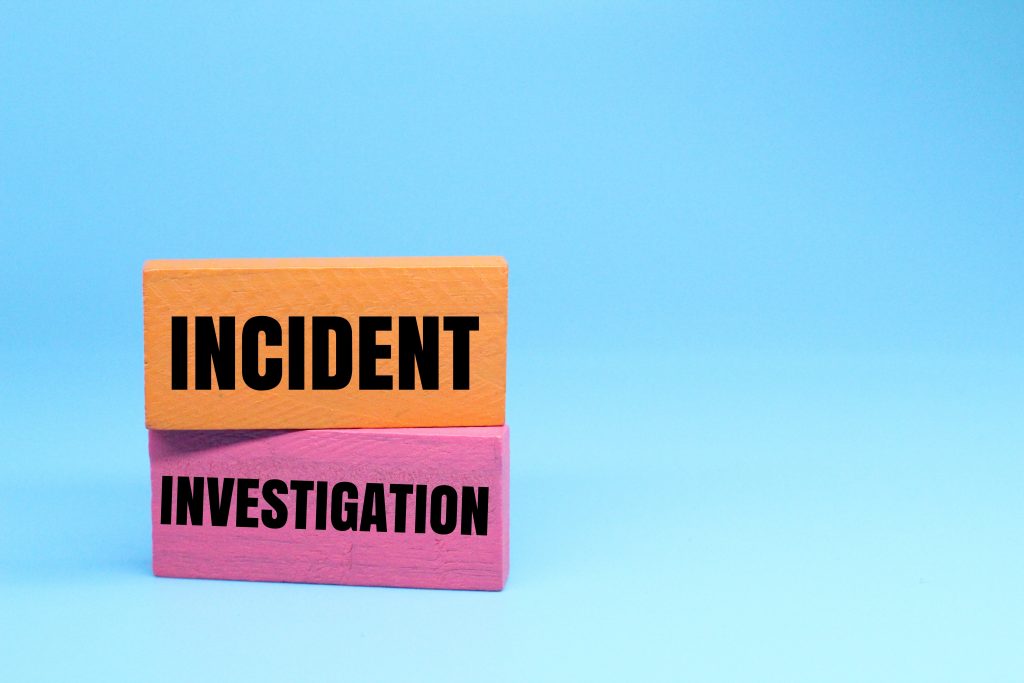Accident / Incident Investigations
Accident investigation is a crucial component of an effective health and safety management system. By learning from incidents and near misses, organisations can identify the root causes of accidents, implement corrective measures, and prevent future occurrences.
By identifying root causes, engaging employees, and learning from incidents, organisations can continuously improve their safety performance and create a safer work environment for everyone.
Where Wooltown Safety Services are employed, we will undertake the management of serious accidents and incidents on your behalf. This often involves the following process:
- Visiting the scene of the incident
- Liaising with witnesses and those involved
- Undertaking interviews and obtaining statements where necessary
- Compiling an accident/incident investigation report
- Detailing any subsequent alterations to process that may be relevant
- Assisting with the submission of RIDDOR forms (if required)
- Collating any relevant safety management procedural documentation and evidence of training relating to the accident/incident
- Assisting with ongoing communications with enforcing authorities or interested parties (insurers, for example).

By identifying root causes, engaging employees, and learning from incidents, organisations can continuously improve their safety performance and create a safer work environment for everyone.
Monitoring, Measuring, Incident Reporting and Analysis
Incident reporting and analysis play a crucial role in maintaining workplace safety. It helps to prevent future accidents and they should regularly be measured, monitored, recorded and analysed. By systematically documenting and examining incidents, organisations can identify trends, uncover root causes, and implement corrective actions to enhance workplace safety.
The Importance of Learning from Incidents
Accident investigations are a crucial component of an effective health and safety management system. By learning from incidents and near misses, organisations can identify the root causes of accidents. They can implement corrective measures, and prevent future occurrences so, in this article, we will discuss the importance of accident investigation and how organisations can use the findings to improve their safety performance.
1. Identifying Root Causes
The primary goal of accident investigation is to determine the root causes of an incident, rather than simply identifying the immediate factors that contributed to the event. By understanding the underlying causes, organisations can develop targeted interventions to address these issues and prevent similar accidents from occurring in the future. It is essential to have skilled professionals who are well-versed in accident investigation techniques and methodologies.
2. Legal Compliance
Understanding the importance of accident investigates and conducting thorough accident investigations is not only a best practice for improving workplace safety, but it is also often a legal requirement. Employers have a responsibility to investigate workplace accidents and report their findings to relevant authorities, ensuring that they are complying with applicable health and safety regulations.
3. Employee Engagement
Accident investigation can also help to improve employee engagement and promote a positive safety culture. Involving employees in the investigation process demonstrates that the organisation is committed to protecting their well-being and gives employees the opportunity to contribute to improving workplace safety.
4. Learning Opportunities
Each accident or near miss provides an opportunity for learning and continuous improvement. By analysing incidents and identifying trends or patterns, organisations can gain valuable insights into the effectiveness of their safety management systems and make informed decisions about potential improvements.
5. Preventing Recurrence
By understanding the importance of the lessons learned from accident investigations, organisations can take proactive steps to prevent future incidents. This may involve updating policies and procedures, enhancing training programs, or investing in new equipment or technology to mitigate risks.






